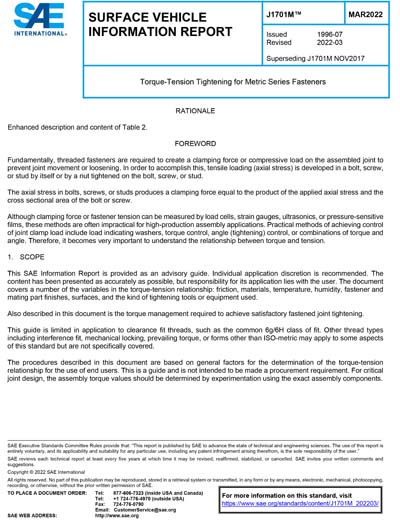Most recent
SAE J 1701M-2022
Torque-Tension Tightening for Metric Series Fasteners
This SAE Information Report is provided as an advisory guide. Individual application discretion is recommended. The content has been presented as accurately as possible, but responsibility for its application lies with the user. The document covers a number of the variables in the torque-tension relationship: friction, materials, temperature, humidity, fastener and mating part finishes, surfaces, and the kind of tightening tools or equipment used. Also described in this document is the torque management required to achieve satisfactory fastened joint tightening. This guide is limited in application to clearance fit threads, such as the common 6g/6H class of fit. Other thread types including interference fit, mechanical locking, prevailing torque, or forms other than ISO-metric may apply to some aspects of this standard but are not specifically covered. The procedures described in this document are based on general factors for the determination of the torque-tension relationship for the use of end users. This is a guide and is not intended to be made a procurement requirement. For critical joint design, the assembly torque values should be determined by experimentation using the exact assembly components.
Society of Automotive Engineers [sae]

